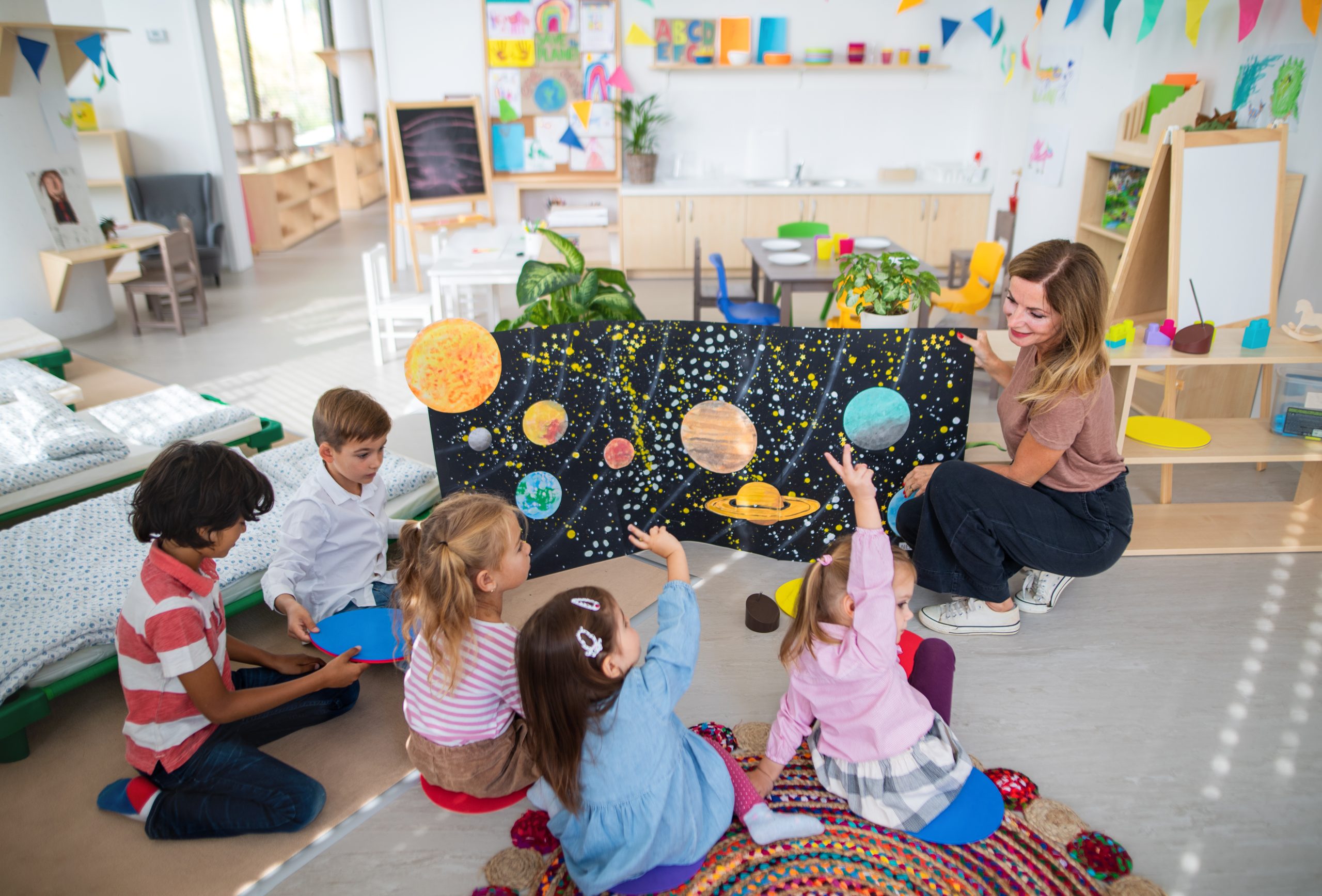For years, trends in kindergarten education have swung between academic-focused, teacher-centered methods and play-based, child-centered learning. More kindergartens favored academics in the early 2000s and into the 2010s, but many educators and parents advocated a return to play-focused kindergartens. Some 20 years later, the best approach is still up for debate.
Kindergartens were introduced in early 19th century Germany by educator Friedrich Froebel. Froebel realized that young children learn best through play and social interaction; indeed, kindergarten means “children’s garden.”
After the kindergarten concept arrived in the U.S., it retained much of its original form until a gradual change began in the 1960s. Soon, the balance of play and academics in kindergartens was teetering up and down.
Academics and Didactics: American Kindergartens from the Seventies to the Nineties
Kindergarten education in the seventies and eighties was mainly play-based, but by the 1990s, greater emphasis was placed on early math and reading skills to be achieved through teacher-centered/teacher-led instruction.
Many people saw this approach as a jumpstart for kindergarteners that would also help prepare them for standardized tests. Others worried that children would suffer undue stress and miss out on the social, creative, and critical thinking development associated with play-based learning.
The passage of the No Child Left Behind Act of 2001 increased reliance on standardized tests and teacher-led instruction. Introducing curricula previously taught in first grade increased pressure on kindergarteners and their teachers.
Enter a New/Old Kindergarten Movement
By the late nineties and early 2000s, a sort of war was brewing as more people reconsidered the effectiveness of heavily structured, didactic education for kindergarteners. School districts, parents, teachers, and the National Association for the Education of Young Children (NAEYC) were among them.
Supporters of child-centered kindergarten argued that a shift back would mean more well-rounded learning opportunities for kids while teachers provided materials, context, and guidance. For example, along with math, children might learn conflict resolution skills while discussing whether to construct a castle or a bridge with building blocks. If the children can’t agree, the teacher might suggest they divide the blocks and build both or take a vote. In 2018, New Hampshire took its own vote and passed legislation protecting play in kindergartens. Other U.S. states have instituted play protections as well.
Weighing Play Against Academic Standards
Today, the Department of Education (DOE) recommends balancing academics and play-based learning, encouraging methods that meet educational standards while reflecting research from organizations like the NAEYC.
The Every Student Succeeds Act (ESSA) of 2015 grants states flexibility in deciding what works for them and allows state and local discretion regarding the mix of play and academics. So, today, some kindergartens favor play and some academics. Lower-income areas can face more challenges in implementing play-based approaches because academics and standardized tests are often prioritized in these regions.
Children must play—not only to learn and to grow healthy bodies but to grow in confidence, critical thinking, self-reliance, and interpersonal skills. And it’s crucial to protect them from harmful academic stress and labels. Prematurely marking a kid as “gifted,” “academically at risk,” or some other term they’ll have to live up to or overcome later may be a bigger risk in academic-focused kindergartens. Still, I see nothing wrong with exposing kindergarteners to academics, provided that lessons are presented in age-appropriate, low-pressure, accessible ways that don’t impede sufficient playtime.
The DOE is right to call for a balanced approach, but it’s incumbent upon them and individual educators and parents to protect children while helping them reach their full potential.
